Weigela is a beautifully flowering perennial shrub from the genus Honeysuckle. The birthplace of this plant is southeast Asia. Weigela is often planted in areas, but many beginning gardeners lose interest in it due to unsuccessful attempts to maintain the viability of the bush until spring. To successfully survive the winter, the plant needs to be fertilized on time, trimmed and must be covered in autumn.
Content
Frost resistant varieties
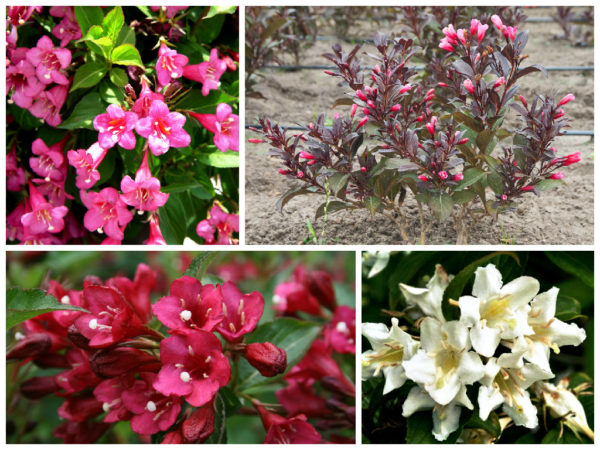 In Russia, wild weigel is found in Primorye. Three varieties of this deciduous shrub grow there: pleasant weigela, Middendorf weigela and early weigela. Twice a year, the shrub is covered with funnel-shaped flowers of various shades. In this case, the shade of the petals gradually changes, becoming darker.
In Russia, wild weigel is found in Primorye. Three varieties of this deciduous shrub grow there: pleasant weigela, Middendorf weigela and early weigela. Twice a year, the shrub is covered with funnel-shaped flowers of various shades. In this case, the shade of the petals gradually changes, becoming darker.
The species with the highest frost resistance
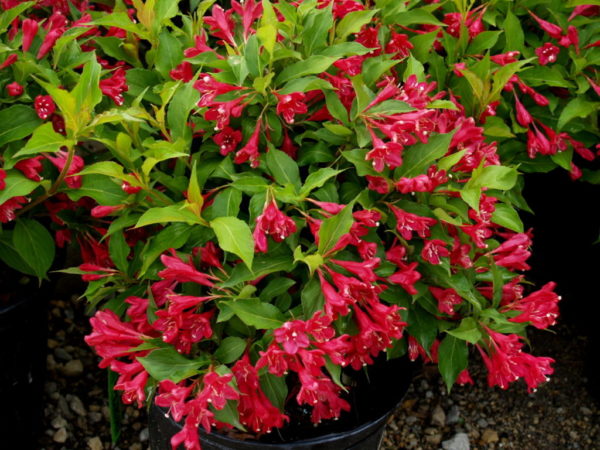 For residents of Russia, especially in the northern regions, frost resistance is one of the defining characteristics of Weigela. Therefore, it is preferable to choose the following types of weigels:
For residents of Russia, especially in the northern regions, frost resistance is one of the defining characteristics of Weigela. Therefore, it is preferable to choose the following types of weigels:
| View name | Description | Frost resistance |
| Weigel Middendorff | Shrub up to 1.5 m tall, blooms twice a year with yellow flowers in the form of inverted funnels. Flowering period lasts 30 days | to -15 degrees |
| Japanese Weigela | The height of the bushes is 1 m. During flowering, covered with funnel-shaped flowers up to 3 cm long carmine shade | to -15 degrees |
| Weigela pleasant | The length of the shoots is up to 1.3 m. During flowering, which occurs twice a season, funnel-shaped flowers of burgundy color with light pink inner part bloom on the branches | Tolerates frosts |
| Weigela early | Bushes grow to 1.5 m tall. During flowering, they are covered with beautiful flowers pink outside and burgundy inside. Flowering lasts 1 month | to -15 degrees |
| Weigel Maksimovich | The height of the shoots is 1.5 m. Flowers of a light yellow color bell-shaped appear in mid-May. Flowering lasts 1 month | up to -10 degrees |
Popular varieties
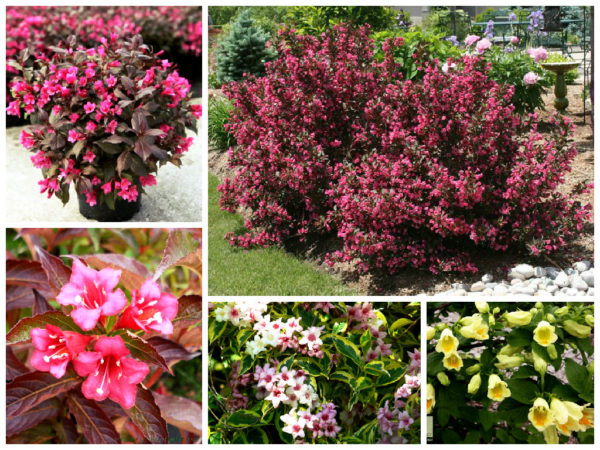 Weigela is distinguished by a variety of varieties; those that are more resistant to frost are more suitable for the Russian climate. The following varieties were especially loved by domestic gardeners:
Weigela is distinguished by a variety of varieties; those that are more resistant to frost are more suitable for the Russian climate. The following varieties were especially loved by domestic gardeners:
- Grade Pink Princess is characterized by unpretentious care and good endurance. In southern Russia, in regions with a mild climate, it can be grown without warming for the winter.
- The Purple variety forms bushes 1.5 m tall. Flowering occurs in the middle of summer. At this time, the bush is covered with beetroot flowers with a cream core. It has good frost resistance, but in the northern regions it needs to be closed.
- Variety Alba forms bushes up to 3 m in height. Blooms with white flowers, gradually changing color to pink. It is characterized by medium resistance to frost.
- The variety Nana Variegata grows to 1.5 m in height, is distinguished by unusual decorative leaves with a light edging. Flowering occurs in the second half of May. Resistance to frost is up to -12 degrees. Therefore, in the northern regions, shelter is mandatory.
General tips
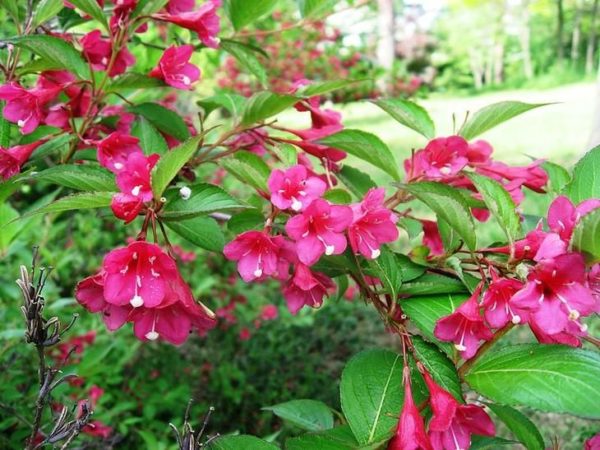 Growing this plant in the garden is easy. To prepare the Weigela for winter, caring for it in the fall consists of the following mandatory measures:
Growing this plant in the garden is easy. To prepare the Weigela for winter, caring for it in the fall consists of the following mandatory measures:
- glaze;
- fertilization with a high concentration of potassium;
- mulching of the perinosal circle;
- forming trim;
- warming in the fall in a frame or frameless way.
Autumn pruning weigels
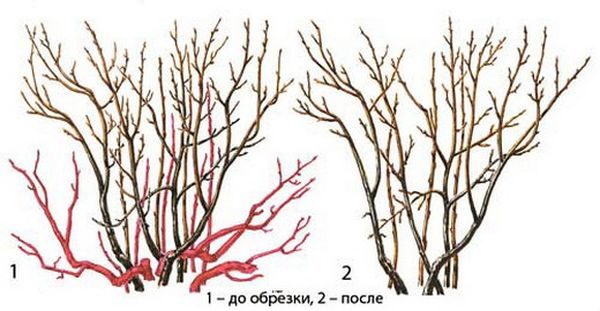 Mowing is a must for all varieties of deciduous crops. If you trim on time, the wounds on the shoots will heal soon, and the bush becomes aesthetically attractive. Cutting off unwanted shoots increases resistance to winter cold.
Mowing is a must for all varieties of deciduous crops. If you trim on time, the wounds on the shoots will heal soon, and the bush becomes aesthetically attractive. Cutting off unwanted shoots increases resistance to winter cold.
Weigel trimming is necessary to solve the following problems:
- growth stimulation of young shoots;
- giving the correct crown shape to adult plants;
- plentiful flowering for the next year;
- rejuvenation;
- improving resilience against disease.
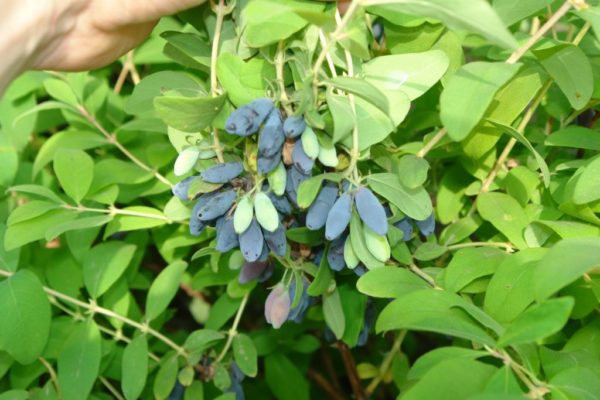 You may be interested in:
You may be interested in:Pruning time
Removing branches for sanitary purposes near a shrub is carried out in spring. During this procedure, all diseased, broken or frost-affected branches are cut out. In the fall, formative and anti-aging pruning is performed. The purpose of this procedure is to give the crown of the bush an aesthetic appearance and, if necessary, remove old shoots on which no flowers are formed.
When it is not possible to cut the plant twice a year, it is preferable to perform the autumn procedure. For weigela, it is of greater importance. In the spring, only a few branches are removed that are not of great importance for the development of the bush.
Pruning technique
Before proceeding with the removal of all unnecessary branches, the soil in the periostemal circle and the lower part of the plant are sprayed with a solution of any fungicide. This will protect the bush from infection with fungal diseases. Then trim in accordance with the following instructions:
- Cut all affected, broken branches above the second healthy kidney by 0.5 cm.
- Cut off poorly developing branches completely.
- Remove a third of the old branches to rejuvenate the bush and stimulate flowering.
- Thin shoots directed deep into the bush to reduce thickening.
- Shorten the branches protruding from the common crown and completely remove the branches to improve decorative qualities.
If pruning is performed with a rejuvenating purpose, all branches older than three years old are cut out completely, and younger ones are cut off by a third. If the bush is too launched, then all branches are removed completely, leaving only a stump from the bush.
Care after trimming
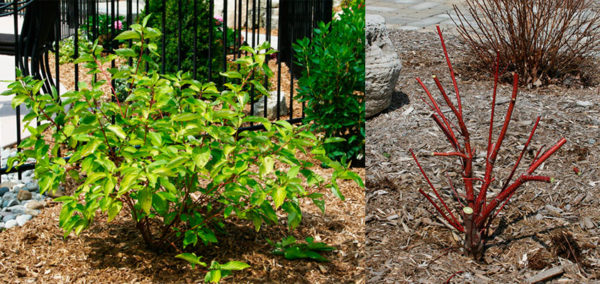 Having removed all unnecessary branches, the remaining wounds on the bush are covered with garden var. After that, the plant is fertilized with mineral complexes with a high concentration of potassium or potassium sulfate and chloride are used for this. These top dressings strengthen the weigel. When applying fertilizer, rely on the manufacturer's instructions. Another feeding option is mullein diluted with water in a ratio of 1:10.
Having removed all unnecessary branches, the remaining wounds on the bush are covered with garden var. After that, the plant is fertilized with mineral complexes with a high concentration of potassium or potassium sulfate and chloride are used for this. These top dressings strengthen the weigel. When applying fertilizer, rely on the manufacturer's instructions. Another feeding option is mullein diluted with water in a ratio of 1:10.
Weigela Shelter for the Winter
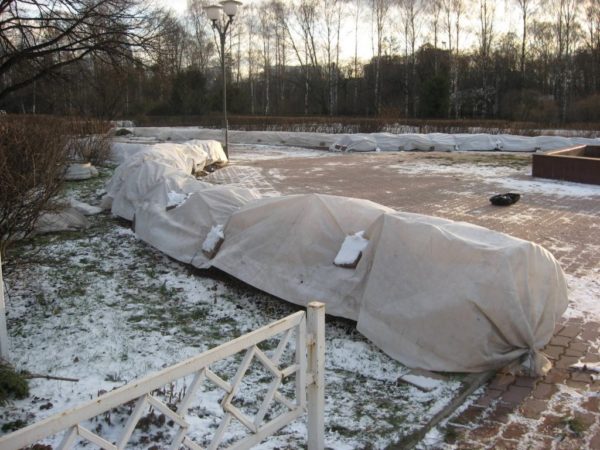 Weigel resistance to frost increases with age. Therefore, plants whose age exceeds 5 years do not need additional winter shelter. Young specimens that have undergone a recent transplant, or patients in the fall, must be closed to increase the likelihood of survival in winter frosts. In addition to low frost resistance, weigel bushes are covered with dense material for the winter due to the structure of the branches. They are very fragile and easily break due to the heaviness of snow.
Weigel resistance to frost increases with age. Therefore, plants whose age exceeds 5 years do not need additional winter shelter. Young specimens that have undergone a recent transplant, or patients in the fall, must be closed to increase the likelihood of survival in winter frosts. In addition to low frost resistance, weigel bushes are covered with dense material for the winter due to the structure of the branches. They are very fragile and easily break due to the heaviness of snow.
Shelter for the Weigela is built after the final cooling. This is done in two ways.
To cover the Weigela for the winter, build a frame:
- Wooden or metal arcs are placed above the plant so that the distance between them and the shoots is 5-10 cm.
- Cover the frame with a film or other dense material. From below, they are fixed with stones or ground.
- If severe frosts are typical in winter, straw or hay is thrown over.
Another method, how to cover a weigel for the winter, is to bend the shoots:
- The ground in a small circle is mulched with spruce, tops or brushwood.
- The branches are pulled together with a free bundle and wrapped in burlap.
- Bend the resulting structure to the ground and secure with brackets.
- Fall asleep on top with mulching material and cover with roofing material.
Weigela winter preparations by region
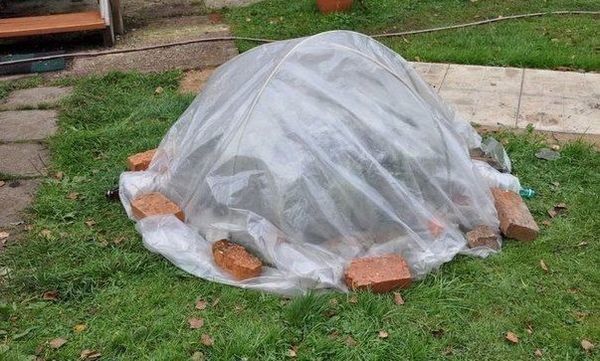 The nature of the winter shelter for a flowering shrub is determined by the climate in the cultivation region. In the central part of Russia and in the Moscow Region, the skeleton method is mainly used, additionally throwing rags or hay on the shelter in front of severe cold.
The nature of the winter shelter for a flowering shrub is determined by the climate in the cultivation region. In the central part of Russia and in the Moscow Region, the skeleton method is mainly used, additionally throwing rags or hay on the shelter in front of severe cold.
In the Volga region, weigel is bent to the soil to protect against winter cold. And for the Urals and the Siberian region with severe winters, after the bush is bent to the ground, it is additionally covered with mulch and building materials. In winter, for additional warming, snow is thrown on top.
In the southern regions with warm winters, minimal shelter is sufficient for wiegels. The soil in the bore circle is mulched with suitable material, and a small mound of soil is poured around the trunk.
Features of growing early weigels
This type of deciduous shrub prefers to grow in a well-lit area, protected from drafts. Choose a site with loose soil for planting. If the earth does not meet the necessary characteristics, sand and humus are additionally added.
They dig a pit for weigels with sides of 50 cm. Then they install a bush in it and bury it. After the earth is compacted and well watered the plant. When planting, plants are placed so that their branches do not touch.
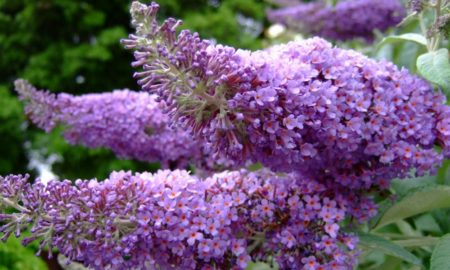 You may be interested in:
You may be interested in:Preparing for the winter
Care for Weigel in the fall in preparation for winter is warming with fir spruce branches. It is laid out in a circle around the barrel, capturing the lower part of the trunk. Instead of spruce, peat or sawdust is used. Then the bush is tightly connected and a wire frame is installed over it. It is covered with agrofibre, lutrasil or other covering material.
Care Features
In summer, weigela is watered regularly. In sultry and hot summers, the bush is irrigated every day using 5-8 buckets of water. To reduce moisture loss, the soil is regularly loosened and mulched with suitable material. This procedure is also useful for reducing weeds. The mulching layer is laid 4-6 cm thick.
In spring and summer, weigela is fed with mineral complexes containing all the substances the plant needs. In August, fertilizer is stopped, so that the shoots are able to lignify and prepare for winter. After the snow melts, weigel is fed with phosphorus-potassium fertilizers or organics.
Breeding
Weigel early propagated mainly by cuttings. For this, cuttings are cut up to 12 cm long with two living buds. Slices are made straight.
The rooting of cuttings is performed in the following order:
- The bottom cut of the cut is treated with a growth stimulator.
- Leave prepared planting material in a darkened room for 12 hours.
- Place the cuttings in a peat-sand mixture for rooting to a depth of 0.5 cm.
- The shoots are covered with sand and covered with glass or glass to create a greenhouse effect.
- 40 days after planting, roots appear.
- After that, young seedlings are grown for a year and a half before planting in a permanent place.
Another method of propagation of weigela is seed. Seeds are planted superficially in wooden crates filled with fertile soil. Sprinkle them on top with sand and cover the container with film or glass. The first shoots appear after 3 weeks.
Possible mistakes in the care and preparation for the winter
Most often, gardeners incorrectly care for deciduous crops and make mistakes in preparing for wintering due to lack of experience. The main ones are:
- Shelter until the final establishment of frosty weather. This leads to the plant's aging and infection with fungal diseases.
- Sheltering a wet plant or bending shoots to moist soil. It also causes rot and rotting.
- Trimming only after reaching the age of three. During this time, the bush grows strongly, the crown takes an irregular shape and further pruning takes several years.
To maintain viability, the Weigel needs to be trimmed and well sheltered every winter. It is important to carry out work on time and in the prescribed manner. Then the plant will successfully survive the frosts and will please the summer with abundant flowering.


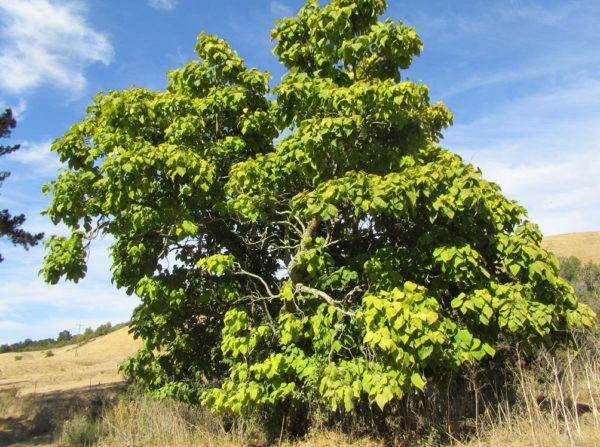
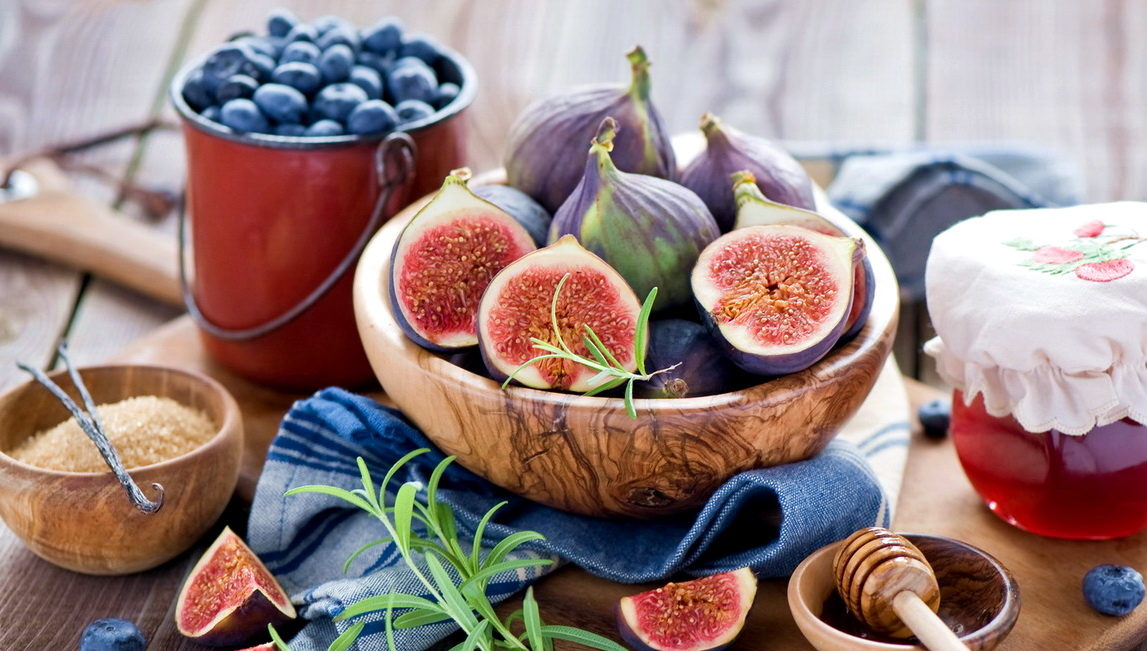
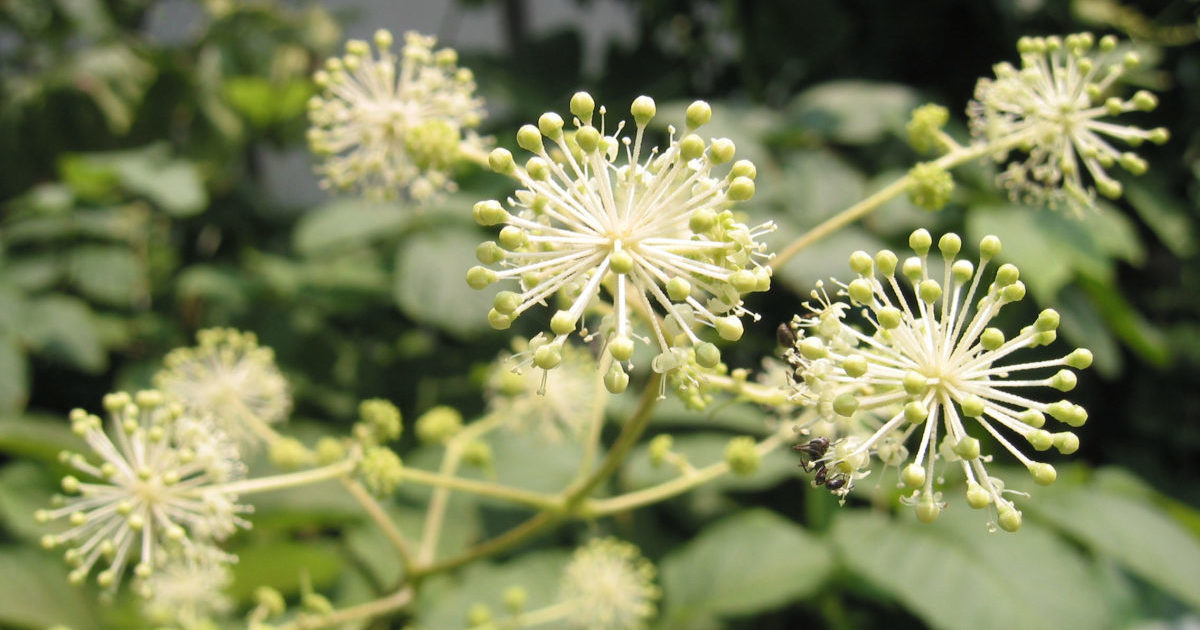 Aralia Manchurian - medicinal properties and contraindications, the use of tinctures in bodybuilding
Aralia Manchurian - medicinal properties and contraindications, the use of tinctures in bodybuilding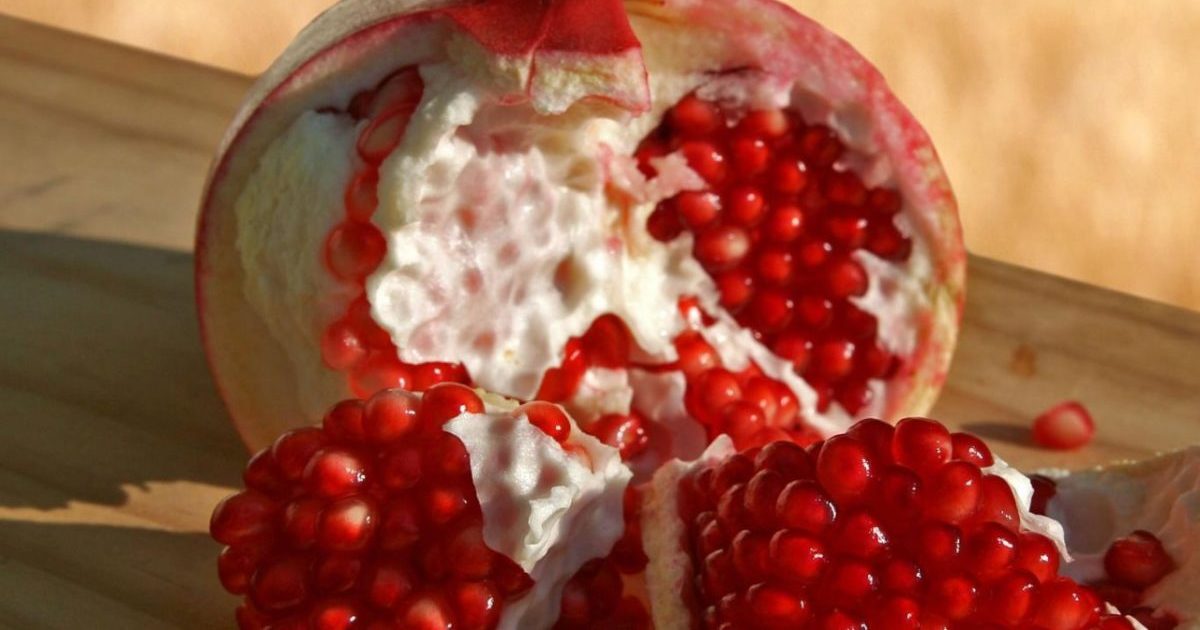 Seedless pomegranate - cutaway appearance, benefits and harms
Seedless pomegranate - cutaway appearance, benefits and harms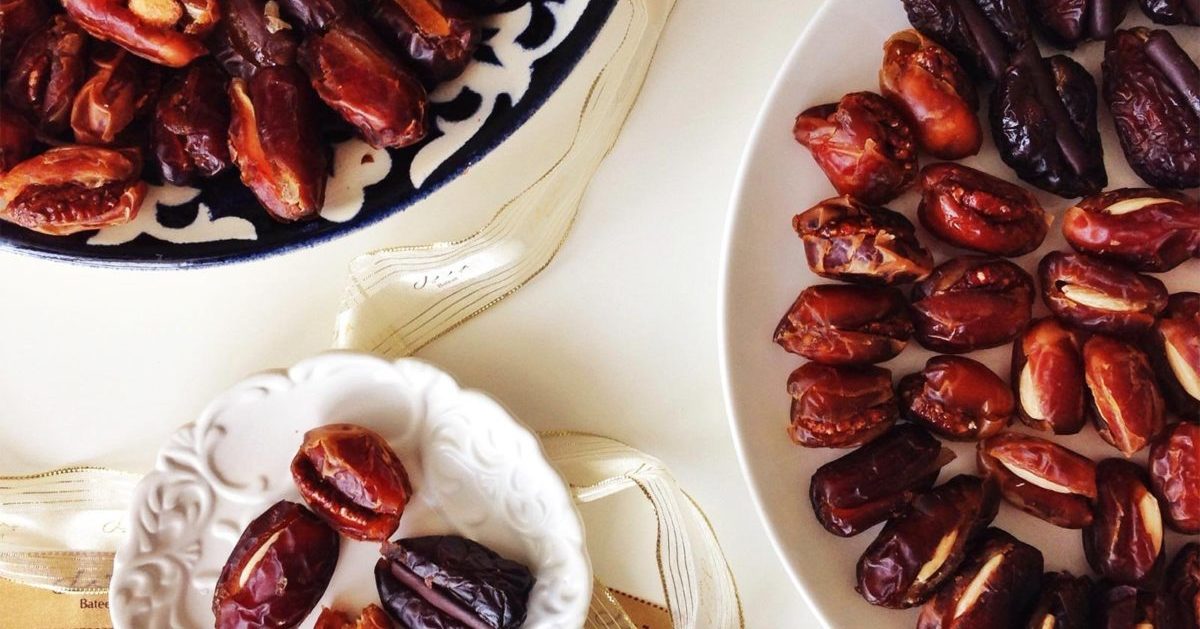 Dates - the benefits and harm to the body, how much you need to eat, properties and calorie content
Dates - the benefits and harm to the body, how much you need to eat, properties and calorie content The benefits and harms of mango for the body of women and men - how to eat it?
The benefits and harms of mango for the body of women and men - how to eat it?